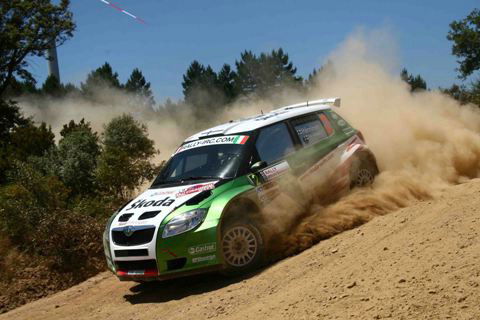Q&A: Matteo Braga - Pirelli

Q:
Matteo, some drivers reported heavy tyre wear at the end of stages. Why was this?
Matteo Braga:
The stages in Portugal are really rough, especially for the second pass, because they run over a very hard and abrasive bedrock. There are lots of sharp stones on the road and our Scorpion tyres can get damaged, particularly on the World Rally Cars, which have a huge amount of traction and torque coming out of the corners. They are also very fast and, combined with the strong braking performance, it puts a great deal of strain through the tyres. The phenomenon is magnified by ambient temperatures of around 31 degrees centigrade and ground temperatures of 38 degrees centigrade, and on the second pass of a stage when 75 cars have already gone through once before so even more sharp stones are exposed.
Q:
What damage has occurred to the tyres?
MB:
The tyre is made from a reinforced construction to help prevent against punctures because we are not permitted to use the run-flat mousse technology under the requirements specified by the FIA, motorsport's world governing body, when we secured the contract to become the official tyre supplier to the WRC for a three-year period from 2008-2010. Despite all the technology we use, stones can cut the tread pattern, which exposes the belts of the tyre and leaves it prone to losing the grip and, ultimately, all the air when all the tread and the belts are completely worn.
Q:
Why hasn't Pirelli designed a tyre that copes better with the conditions - after all there was a high wear rate on Rally de Portugal last year?
MB:
We knew from our experiences last year there would be an issue with tyre wear on this rally, so did the teams and drivers, which is why it was clear the drivers had to manage their tyres. It is the same with components like the gearbox, engine and differentials. If they are used beyond their limits it can reduce the efficiency or compromise the durability of the specific part. The same can happen with the tyres. Sebastien Ogier and Sebastien Loeb did a very good job with managing their tyres and made sure their tyres provided a consistent performance. We must also remember this year that the rally is two months later than before so the temperatures are obviously higher.
Under the FIA's requirements we had to design one type of gravel tyre, albeit in a soft and hard compound, which could be used for a variety of events and conditions. For example, it is ideal for a rally like New Zealand but for an event like Portugal it is a compromise and everybody is aware of this.
Another factor we have to consider is the different levels of the drivers and types of car. The Priority 1 and Priority 2 drivers can use a total of 42 tyres but the Priority 3 drivers are limited to 29. As well as the World Rally Cars, the Scorpion tyre is used on the standard Group N cars and the Super 2000 cars, which have a different level of performance and, therefore, a different rate of wear.
Q:
What can be done for future?
MB:
For sure we can improve the level of resistance of the tyre by making changes to the profile and the tread pattern or just by changing the tread compound in order to give more protection to the tyre carcass. We have the technology to do this, we actually have an existing product, the XR tyre, which we used on events like the Acropolis Rally in the past. It's perfect for events like Portugal where we have a very hard surface but not suitable for other gravel rallies like Finland. Under the control tyre regulations we have to use the same tyre everywhere so again it is an issue of compromise.
